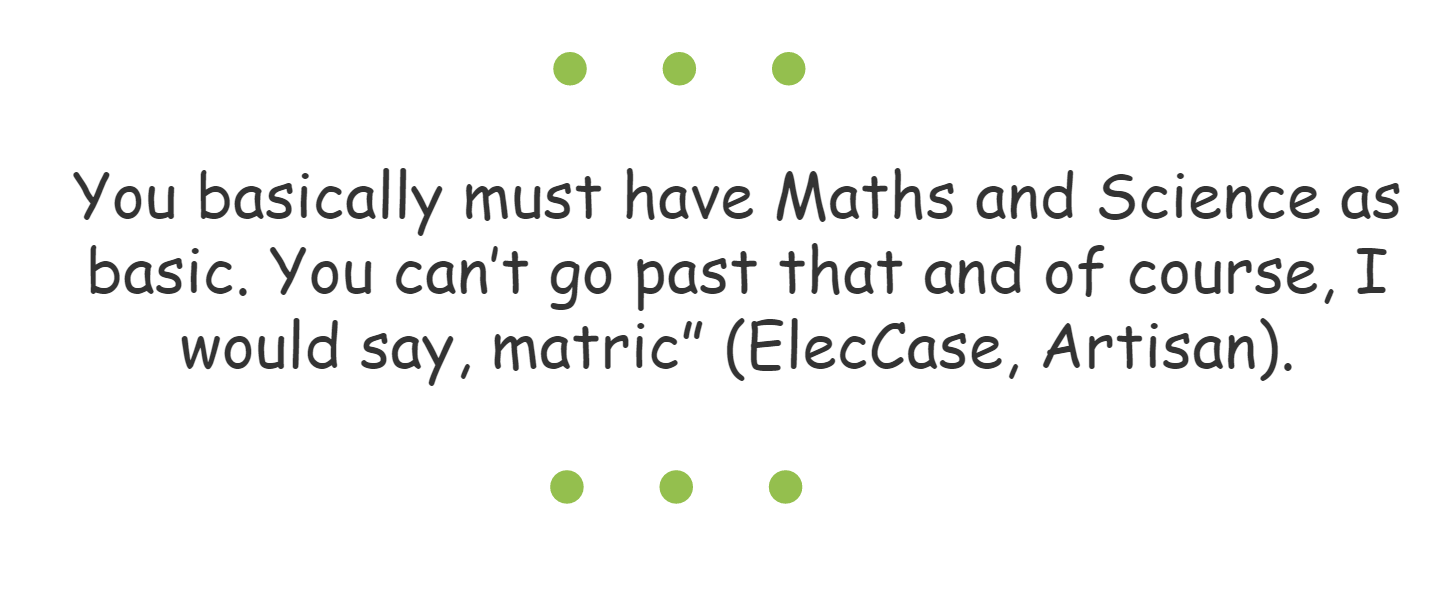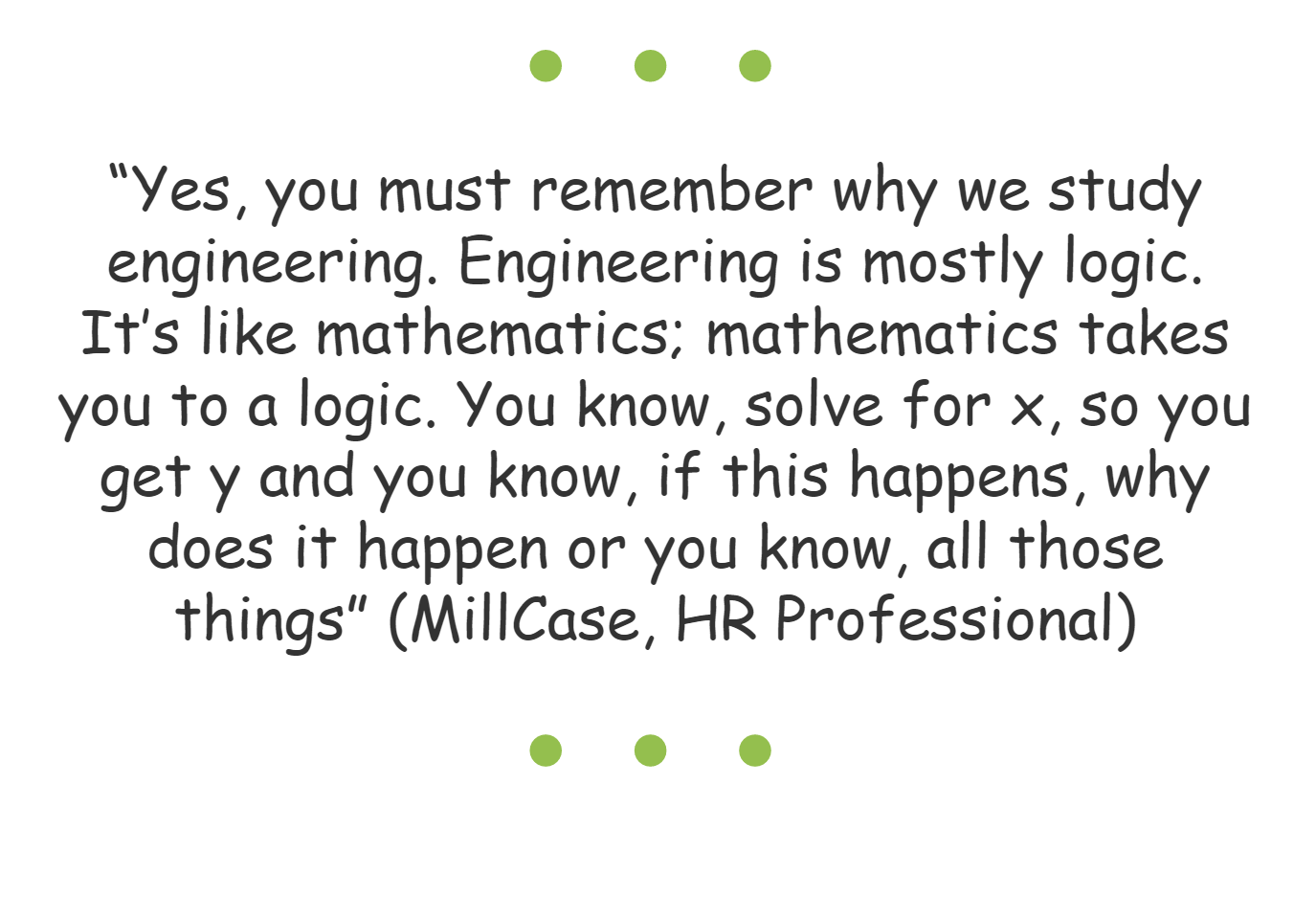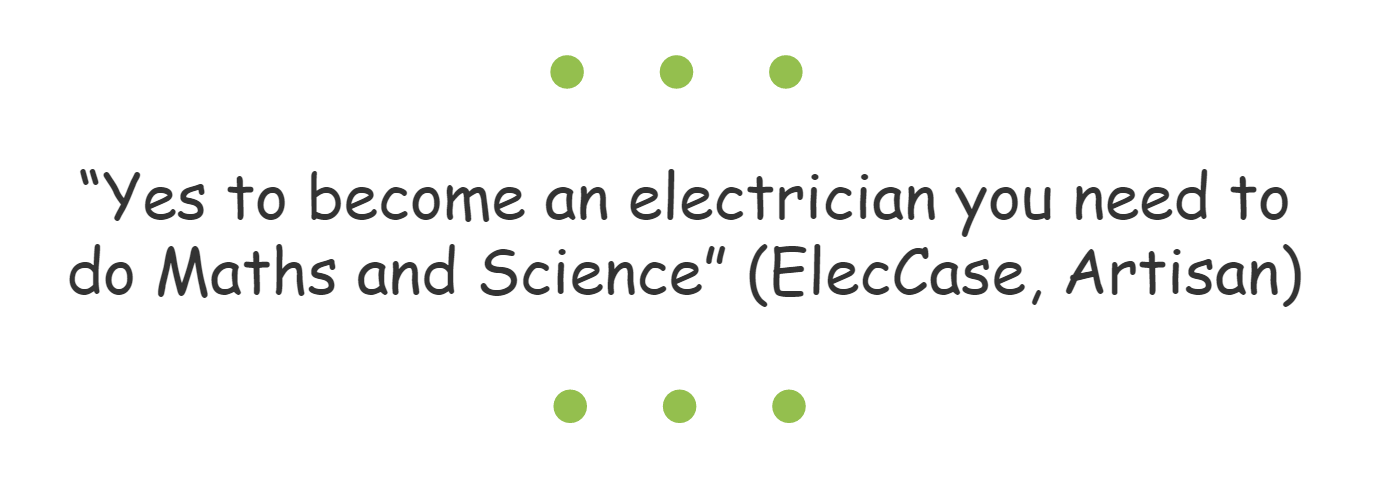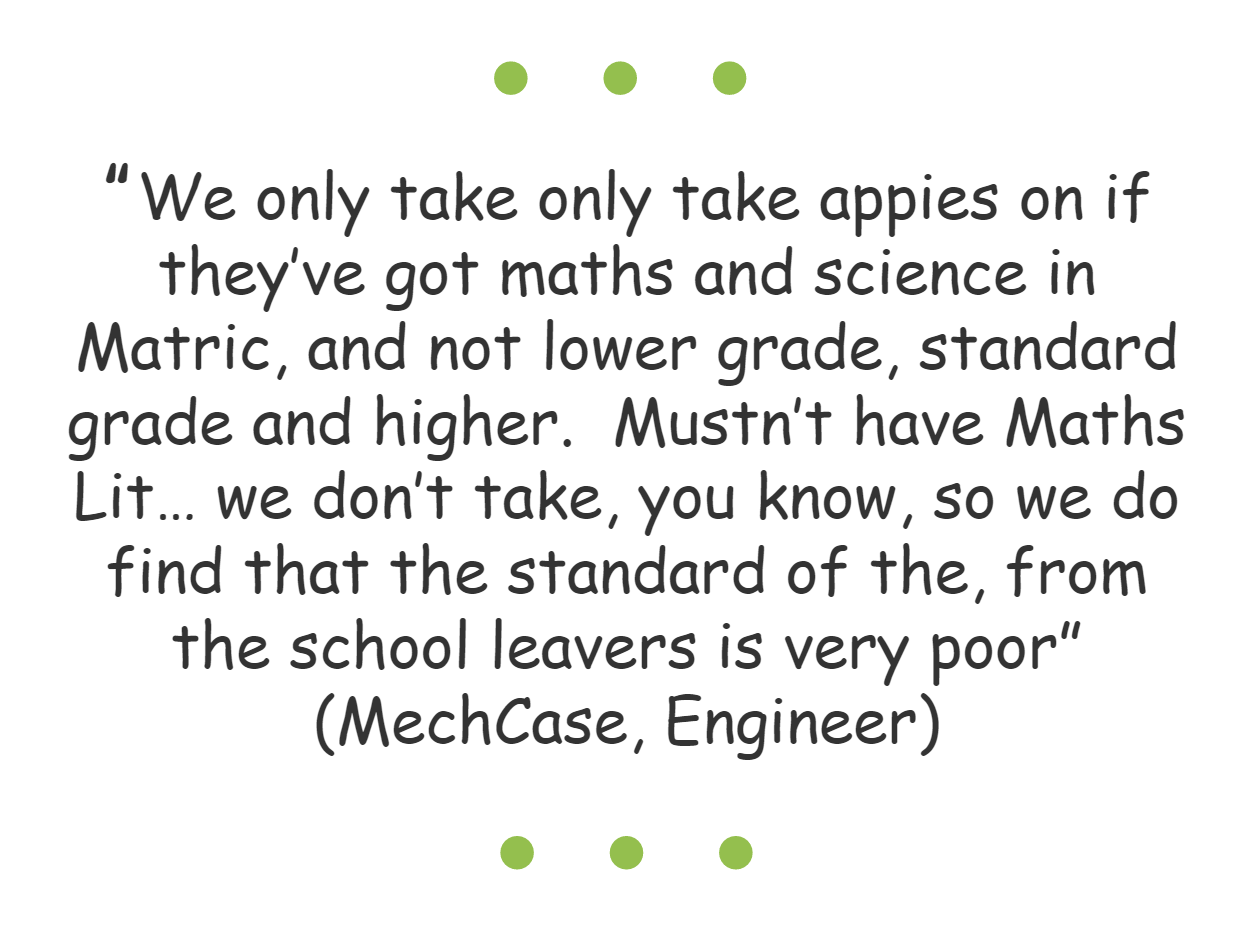You need matric mathematics to access artisanal work
As part of the Labour Market Intelligence Partnership (LMIP), a consortium of government and research partners, we conducted a study aiming to better understand the changing nature of artisanal work and occupations. The key argument being, if we want to be better capacitated to plan for the appropriate provisioning of artisanal skills in the country, we need to have a clearer understanding of changing milieus and identities. In other words, how is the context of artisanal work changing and how does this influence how artisans view and relate to their work.
The case study research focussed on selected artisanal occupations in three industry sectors: Mechatronics technicians in the automotive sector, Electricians in the mining sector, and Millwrights in the metals sector. Each case study investigated changes in work organisation, materials and tools, and the skills and knowledge expected to be held by artisans across five different occupational categories (Artisans, Apprentices, Technicians, Engineering Professionals and Human Resources Professionals). The study evidence raised some interesting insights around the role that Mathematics and Science play in supporting the development of artisanal skills in the country.
The minimum legal requirement for becoming an apprentice is a Mathematics and Science pass, at least at Grade 10 level, or an N1 Engineering Science and Mathematics qualification. However what emerged quite clearly from the study was that employers are requiring at least a matric certificate with good results in Mathematics and Physical Science, as well as at least one applicable related subject; such as Information technology (IT), Engineering Graphics and Design Electrical Technology/ Mechanical Technology. Alternatively, an N3 technical certificate with supporting language subjects at Matric level or an NCV level 4 certificate (in related engineering field of study) may be sufficient.
Maths literacy was not perceived as making the cut. As one respondent indicates “maths literacy, it is a waste”, he goes on to elaborate, “[an individual] has to do the hardcore maths properly, do not move him from maths to maths literacy” (ElecCase, Artisan).
A strong perception that only pure maths and science prepare individuals for artisanal work
The country boasts a high number of Bachelors passes (166 263 in 2015) however the pool of students with mathematics passes is much lower. In 2015, just over 84 000 achieved passes above 40% and approximately 53 000 achieved passes above 50%.
The study evidence highlights that only pure Maths and Science at a matric level, are seen to be preparing individuals adequately for the demands of artisanal work. As this respondent indicates, “for any engineering course you need to have maths and science” (MechCase, Apprentice). This was a sentiment shared across the case study sectors.
On the other side of the coin, respondents highlight the negative impact that not having pure Maths and Science can have on an apprentice’s development trajectory; “they didn’t have maths and science and they moved back into a technical school, they had to redo a year, so they wasted a year in their life to qualify technically” (ElecCase, Artisan).
Maths literacy seen as not facilitating abstract reasoning
Maths literacy was also not considered to facilitate abstract reasoning. This is because the abstract thinking and deductive reasoning taught through the pure maths and science is viewed as an important requirement for the problem solving and diagnostic skills required for artisanal work. As this respondent indicates, “you have to have that maths, also stimulates the abstract thinking” (ElecCase, Artisan). This was clearly a strong perspective common across all the three cases and occupational categories that made up the empirical component of this study. An apprentice points out, “maths and science they help you in the way you do calculations… they teach you in a way of thinking, they help you into resolving solutions, you get to understand there’s not only one solution to a problem”.
Maths literacy seen as not being a sufficient base for artisanal training
Respondents were unanimous that a matric with Maths and Science is critical, and that individuals coming through the system with Maths literacy will be at a disadvantage. As the following respondent indicates “you have to have that. We have a feeder system … We also take students from the NCV Programme… we take minimum NCV Level 4… they should advise people that’s got the matric that did not have the Maths and Science if they want to go into technical direction – go the NCV route… work your way up to NCV Level 4… But if you have a person that didn’t do Maths, he didn’t do Science – he has an academic matric with non-technical subjects – to put them into a technical – it doesn’t work. We show it, we prove it to them – it doesn’t work. ”(MechCase, Engineer).
In this regard, a matric qualification, with Maths Literacy is not viewed as an adequate foundation for the training of an artisan. This respondent asserts, “the Literacy Maths become a challenge in engineering because that person, he is not able to have the concepts for understanding” (ElecCase, HR Professional).
To become an apprentice employers often require at minimum a pure Maths and Science matric pass
It is clear that learners need to be made aware not only of the legal requirements for entry into artisanal training, but also that employers often have much stricter requirements for accepting someone into an apprenticeship. This is key labour market information that needs to be communicated to students earlier on in their secondary schooling, so that they can make the appropriate subject selections that will better support their preferred career trajectory.
Key: ElecCase – Electricians in the mining sector, MechCase – Mechatronics trades workers in the automotive sector, MillCase – Millwrights in the metals sector.
For the full report, please go here.
Authors: Angelique Wildschut and Tamlynne Meyer
Education and Skills Development research programme of the HSRC




